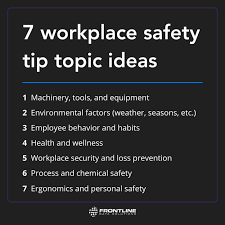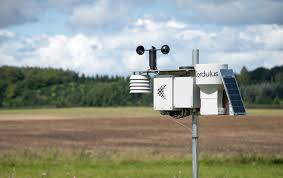The Importance of Flood Safety
Floods are one of the most common and devastating natural disasters that can occur in any region. Being prepared and knowing how to stay safe during a flood is crucial for protecting yourself and your loved ones. Here are some essential flood safety tips to keep in mind:
Before a Flood
- Stay informed about flood risks in your area by monitoring weather reports and alerts.
- Develop an emergency plan with your family that includes evacuation routes and meeting points.
- Prepare an emergency kit with essentials such as food, water, medications, and important documents.
- Safeguard your home by installing flood barriers, elevating electrical outlets, and storing valuables at higher levels.
During a Flood
- Follow evacuation orders issued by local authorities and move to higher ground immediately.
- Avoid walking or driving through flooded areas as water levels can be deceptive and hide dangers like debris or strong currents.
- Avoid contact with floodwater as it may be contaminated with harmful substances or electrical hazards.
- Stay tuned to emergency broadcasts for updates on the situation and instructions from officials.
After a Flood
- Avoid returning to your home until authorities declare it safe to do so.
- Inspect your property for damage before re-entering and take photos for insurance claims.
- Clean and disinfect any areas affected by floodwater to prevent mold growth and health risks.
- Contact your insurance provider to file a claim for flood damage if you have appropriate coverage.
Remember that safety should always be your top priority during a flood. By following these tips and staying prepared, you can minimize risks and protect yourself in the event of a flooding emergency. Stay safe!
Essential Flood Safety: FAQs on Staying Safe and Prepared
- How much water can sweep you off your feet?
- What are 5 safety tips for floods?
- What are 4 preventive measures of flood?
- What are 5 ways to prepare for a flood?
How much water can sweep you off your feet?
When it comes to the force of water during a flood, even a small amount can be incredibly dangerous. It doesn’t take much water to sweep a person off their feet. In fact, as little as six inches of swiftly moving water can knock an adult off balance and potentially carry them away. It’s important to never underestimate the power of moving water and always exercise caution when near flooded areas. Stay safe and avoid walking or driving through floodwaters to prevent being swept away by even seemingly shallow depths.
What are 5 safety tips for floods?
When it comes to flood safety, there are five important tips to keep in mind to protect yourself and your loved ones. First, stay informed about flood risks in your area by monitoring weather reports and alerts. Second, have an emergency plan in place that includes evacuation routes and meeting points. Third, prepare an emergency kit with essential supplies like food, water, medications, and important documents. Fourth, avoid walking or driving through flooded areas as water levels can be deceptive and hide dangers like debris or strong currents. Lastly, follow evacuation orders issued by local authorities and move to higher ground immediately when instructed. By following these safety tips, you can better prepare for floods and stay safe during emergencies.
What are 4 preventive measures of flood?
Implementing preventive measures is essential to reduce the impact of floods on communities. Four key strategies for flood prevention include proper land use planning, constructing and maintaining flood defenses such as levees and dams, improving stormwater management systems to reduce runoff, and promoting early warning systems to alert residents of potential flooding risks. By proactively addressing these aspects, communities can enhance their resilience and minimize the damage caused by floods.
What are 5 ways to prepare for a flood?
Preparing for a flood is essential to ensure the safety of yourself and your loved ones. Here are five key ways to prepare for a flood: First, stay informed about flood risks in your area by monitoring weather reports and alerts. Second, develop an emergency plan with evacuation routes and designated meeting points for your family. Third, assemble an emergency kit with essential supplies such as food, water, medications, and important documents. Fourth, safeguard your home by installing flood barriers, elevating electrical outlets, and securing valuables at higher levels. Lastly, consider purchasing flood insurance to protect your property in case of flooding. By taking these proactive steps, you can better prepare for a flood and reduce the potential impact on your safety and well-being.




